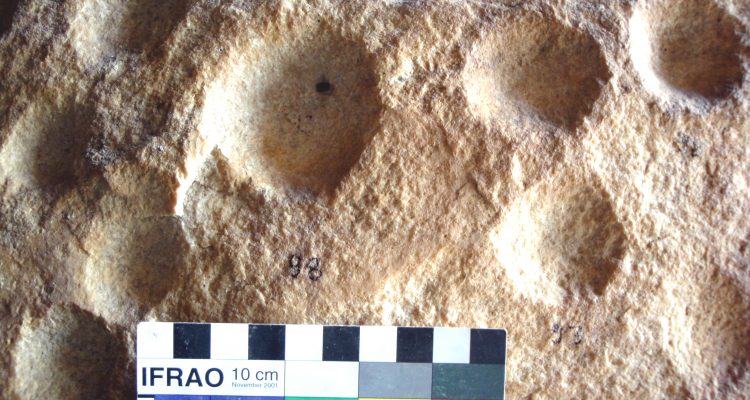Daraki-Chattan with more than 500 cupules on its both the vertical walls is an extraordinary Palaeolithic Cupule site in Chambal basin in Bhanpura-Gandhisagar region. Cupules in Daraki-Chattan cave are circular, oval, elliptical and roughly triangular. In terms of depth they are broad dish shaped, deep bowl shaped, circular with conical depth, oval or elongated with oblique and conical-receding depth, roughly triangular with roughly triangular depth. The biggest cupule on northern wall measures 54.65 x 51.00 x 16.35 mm and the smallest one 30.30 x 38.60 x 6.00 mm, that on the southern wall the dimensions of the biggest and smallest cupules are 55.80 x 64.00 x 15.00 mm and 17.00 x 16.00 x1.40 mm. Cupules in Daraki-Chattan are patinated and do not show any definite pattern, but pseudo-patterns can be observed in them (Kumar 1995). It is interesting to observe the effect of climate, temperature fluctuations, and the process of exfoliation especially in the front half of the cave. Hence, because of the intense play of these factors a large portion in the first half of the southern wall and a portion in the front of the northern wall bear deep exfoliation scars and are devoid of cupules. Because of these factors some of the cupules in these parts of the cave are in a different state of weathering, which has not only reduced their size but in some cases even altered their shape. This process has been going on throughout the life history of the cupules and even prior to their creation. Similarly, some portions of the cave walls and cupules on them have been regularly washed by percolating rainwater every year. The salts carried with sweeping water dries up and gets hard in the long drier phase of the year. It has been going on for years. The so formed encrusted salt layers get peeled off by the play of water or entirely removed with the exfoliating surface of the wall. The cave walls have witnessed many such cycles of deposition and exfoliation of encrustation of the salts on them. Observation and understanding of the taphonomic phenomenon is necessary before any conclusion is made from the scientific analyses.


Leave a Reply